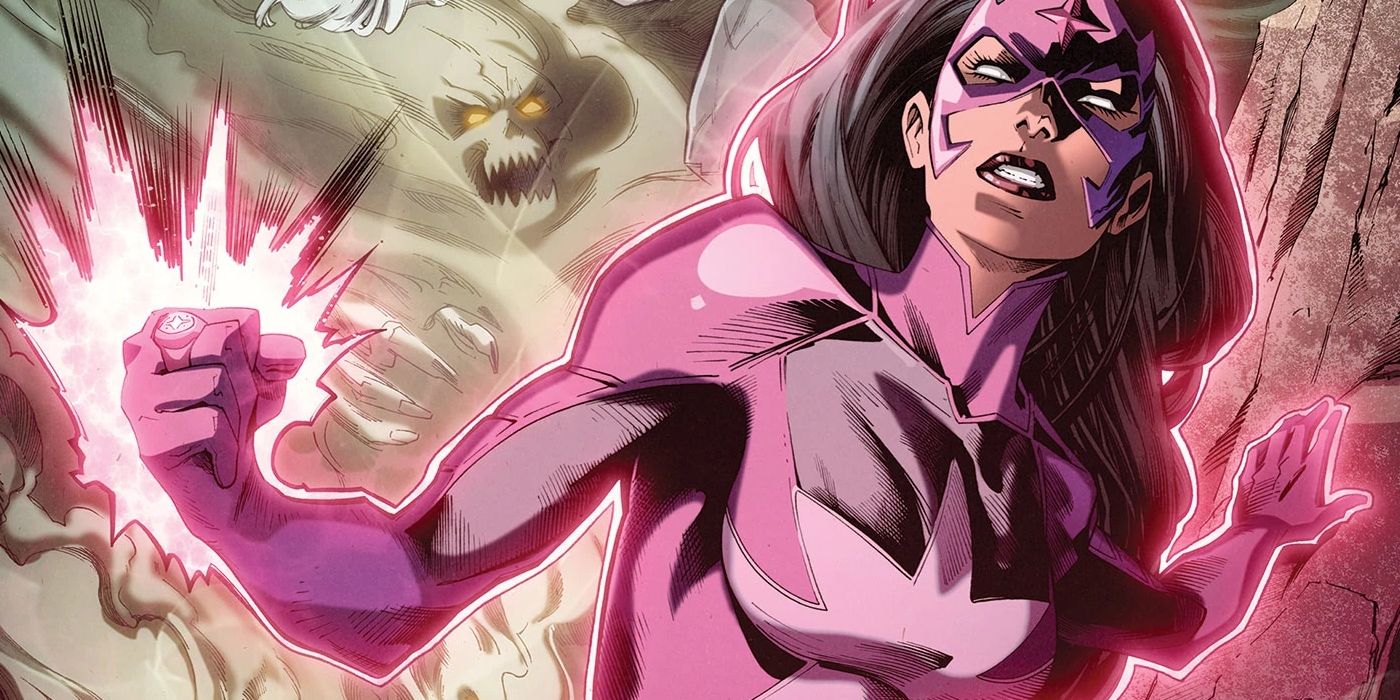
Warning: Spoilers for Green Lantern #18Green Lantern has faced many formidable foes over the years, but only one holds the title of his most unnerving foe to date, and that's none other than the Predator. The Predator's complicated history with Star Sapphire – a Violet Lantern and Hal Jordan's love interest – makes him a problematic figure in DC history, and his return to Green Lantern lore marks a critical moment of growth for her.
In Green Lantern #18 by Jeremy Adams, Xermánico, Romulo Fajardo Jr. and Dave Sharpe, a cosmic war has broken out in the DC Universe, and the Green Lanterns are at the center of it. While Hal Jordan and his allies face the power of Lord Premier Thaaros' Dark Star, Star Sapphire has been separated from them and instead faces her own enemy in the form of the Predator entity.
The Predator has made his long-awaited return to Green Lantern lore, looking scarier than everand only Star Sapphire has the power to defeat him once and for all.
Star Sapphire's “Toxic Ex” The Predator Returns to Green Lantern Lore
Carol Ferris faces the greatest cosmic villain
Having existed since the creation of the Emotional Spectrum at the dawn of time, the Predator is essentially the personification of violent love. Each facet of the Spectrum that a Lantern Corps draws from has a sentient being that embodies its emotion, like Ion for the Green Lanterns' willpower, so the Predator fills that role for the love-driven Violent Lanterns. By latching onto a host, this supernatural entity can release its inner aggression and turn its feelings for another person into obsession. Love is a complex emotion, and the Predator uses this complexity to his advantage to feed on it like a parasite.
Back when Star Sapphire was a villain in opposition to Green Lantern, she was inhabited by the Predator and imbued with insurmountable powers fueled by that toxic form of love. Carol eventually gave up her powers and thus gave up the Predator's influence alongside them. Now that she has regained her powers on her own terms, depicted in Green Lantern #12, when she equips a power ring to save Hal, she embarks on a journey to become a hero instead of a supervillain. Instead of relying on the Predator's toxicity to fuel her Violet Lantern powers, Star Sapphire now gains strength from genuine love.
The Predator is none too pleased with this development, of course, and his intentions with Star Sapphire in Green Lantern #18 must win her back to his side so they can reunite properly. This entity reveals that he sent her the Violet Lantern ring that she claimed in a previous issue, and then professes his love for her in a moment that feels very real. The possessive love that the Predator represents defines his dynamic with Star Sapphire as he tempts her back into an unhealthy relationship. Star Sapphire's complicated history with the Predator further enhances this dynamic, emphasizing its problematic aspects.
Who is the predator? A history of Green Lantern's controversial enemy
The Predator has taken many forms throughout DC's history
Although the Predator is currently portrayed as a supernatural entity, his past form is somewhat more confusing. In his initial design, the Predator appears as a typical man who tries to seduce Carol Ferris. In Green Lantern #192 by Steve Englehart and Joe Staton, Star Sapphire – who, at the time, is an alternate personality that Carol has no memory of – informs Green Lantern that the Predator is a manifestation of his masculinity that splits into his own body. His interest in Carol is therefore a bizarre form of self-love that is taken to an uncomfortable degree, considering he goes as far as getting Star Sapphire pregnant.
Needless to say, this iteration of the Predator isn't worth preserving, so Star Sapphire's connection to the Predator was later retconned to be less scary. In the updated version of Green Lantern lore, the Predator possessed Star Sapphire rather than being spawned by it. Making him a separate being removes the controversial nature of his character and improves his purpose. Her search for Star Sapphire is not a disconcerting manifestation of her “masculine” love for herself – whatever that might mean. Now, the Predator pursues Star Sapphire so he can manipulate a powerful Violet Lantern host in parasitic form.
Star Sapphire finally defeats the predator, proving that she has become a true hero
The Predator's possessive form of love no longer affects Star Sapphire
With Star Sapphire's defeat of the Predator, she has proven that she no longer follows her twisted idea of love and will never succumb to it again. In her speech when she beat him, she declares that love is “it's not a parasite that only takes, it's the power that gives”. Carol's thoughts on love reflect how much she has changed since the Predator's ancient takeover of her in DC lore, and serve as a culmination for her evolution from villainy to heroism.
Currently, Star Sapphire has joined the Justice League as one of the team's core members, putting her love-driven abilities to use in the name of righteousness. The Predator will no longer be a threat to Green Lantern thanks to Star Sapphireas she has shown that she no longer needs to depend on him to channel her emotions into power.
Green Lantern #18 is now available from DC Comics.


